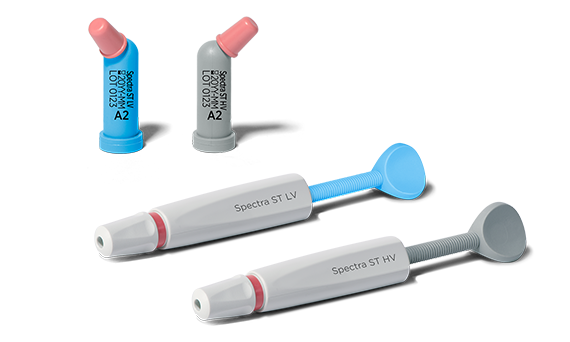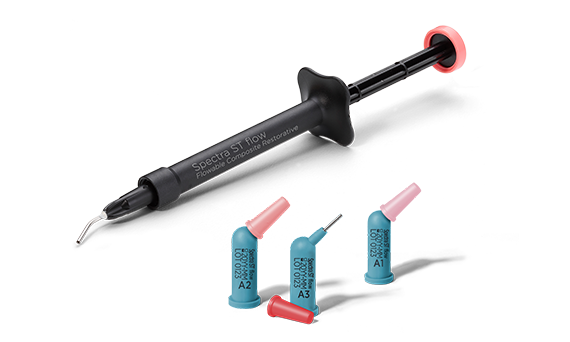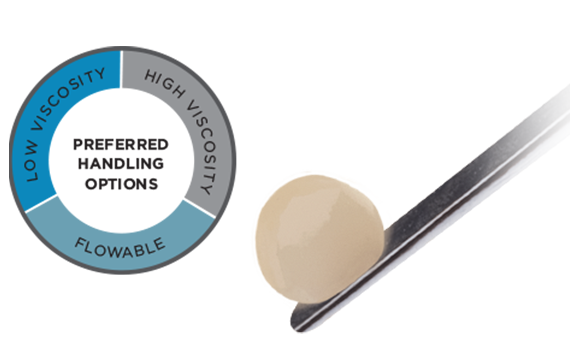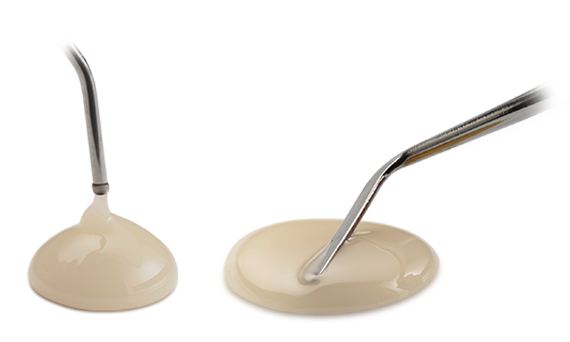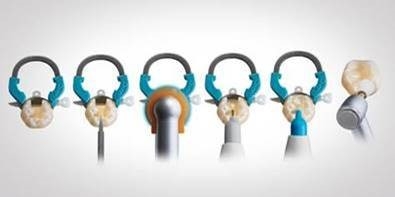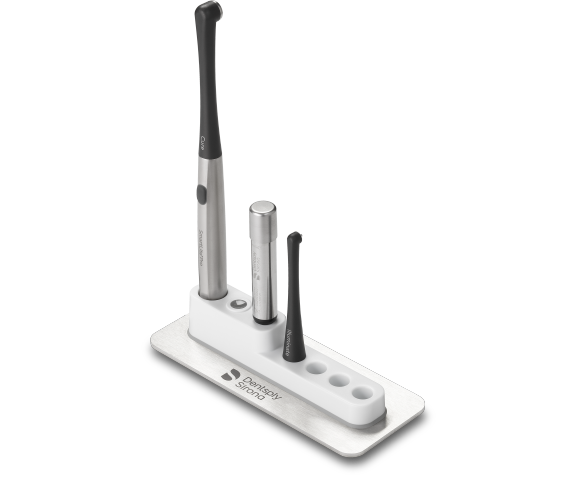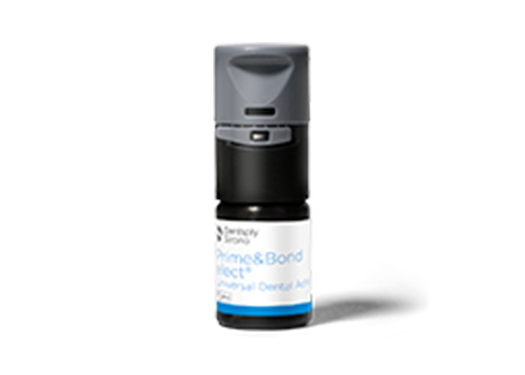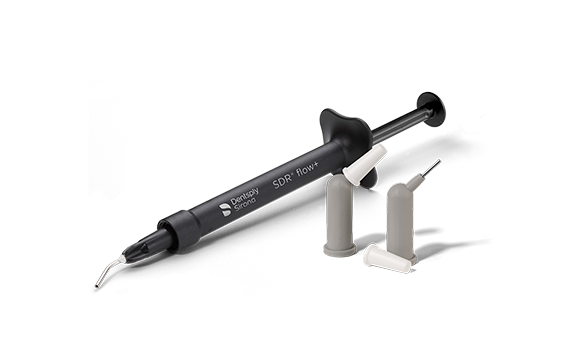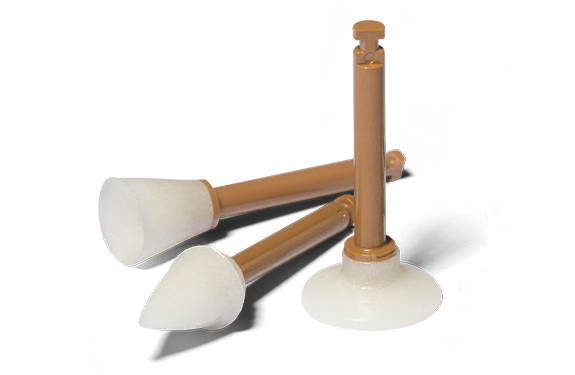You want to know more?
Simplify every restoration with TPH Spectra ST composites featuring SphereTEC technology.
The TPH Spectra ST composite portfolio covers the full range of dentist's handling preferences and esthetic needs. And thanks to SphereTEC filler technology, the entire portfolio offers optimized performance in the areas that matter most, helping clinicians achieve reliable, esthetic results efficiently.
Why choose TPH Spectra ST Composites?
Optimized handling
for easy placement and shaping. SphereTEC fillers enable excellent adaptation and sculptability without stickiness.
Simplified esthetics
5 universal CLOUD shades cover the full VITA range with additional dentin and enamel shades for complex anterior cases.
Reliable longevity
with high polish and stain resistance for lasting esthetics.

SphereTEC Filler Technology
TPH Spectra ST composites excel where it counts thanks to SphereTEC filler technology.
Key performance advantages of TPH Spectra ST composites were made possible with SphereTEC filler technology. The SphereTEC fillers’ morphology, particle size distribution, and surface microstructure deliver the benefits that matter most to dentists.
- Easy handling is essential to placement efficiency. The shape and size distribution of SphereTEC® fillers creates a ball-bearing like effect that enables excellent adaptation and sculptability. And they bind more free resin than usual fillers to avoid stickiness.
- Natural esthetics should be easy to create. SphereTEC fillers are uniquely constructed to balance opacity, translucency, light absorption, and scattering for an excellent chameleon effect. Their microstructure enables a fast polish to a high gloss.
- Durable results promote profitability and reputation. High filler packing density plus micro-mechanical locking of our resin and fillers deliver material strength and durability. And our resin infiltrated, prepolymerized filler design enables sophisticated stain resistance.
SphereTEC filler Technology
Discover how SphereTEC filler technology overcomes limitations in composite design by optimizing submicron particles to deliver unique features and ideal results.
Dr. Alan Atlas on TPH Spectra ST
DMD, www.DrAlanAtlas.com
Dr. Christopher Campbell on TPH Spectra ST
DDS, Palmetto Dental Associates
of dentists complain about handling properties of composites such as adaptability and stickiness.²
of dentists use traditional flowables for Class Vs. On average, 1/4 of Class V restorations are in the anterior.³
of dentists are stocking more than five VITA®¹ shades.⁴
Your preferred handling
Simplified esthetics
Universal CLOUD shades for common cases
SphereTEC’s primary filler particles and resin together enable an excellent chameleon effect for simplified shade matching. One universal CLOUD shade is all you need for the majority of cases.
- 5 universal CLOUD shades cover the full VITA®1 range
- Reliable, accurate shade match to surrounding tooth structure
- Save money and shelf space by reducing inventory
- BW shade available for bleach white restorations
Plus dentin and enamel shades for complex anterior cases
For esthetically demanding anterior cases, TPH Spectra ST Effects and TPH Spectra ST universal CLOUD shades work together in a simplified layering technique.
- Select one of two dentin effects shades for added opacity
- One enamel effect shade for a highly translucent incisal edge
- Simple recipes and technique for advanced esthetic results

Frequently Asked Questions
TPH Spectra ST is a Universal Composite Restorative indicated for direct or indirect replacement of missing or deficient tooth structure in primary and permanent anterior and posterior teeth.
SphereTEC is the new proprietary filler technology used in TPH Spectra ST. The SphereTEC filler particle manufacturing process uses submicron glass and spray-granulation to produce well-defined, pre-polymerized spherical filler particles. The SphereTEC fillers’ morphology, particle size distribution and surface microstructure are the key for the excellent handling, strength, and polishing characteristics of TPH Spectra ST.
Yes, all 6 TPH Spectra ST shades are available in low-viscosity (LV) and high-viscosity (HV), and in both Compules tips and syringe delivery.
TPH Spectra ST was designed to provide simplified shading. Thanks to an enhanced chameleon blending effect, full coverage of the 16 VITA® classical shade system (A1-D4) can be covered with just five TPH Spectra ST shades of moderate translucency. In addition, a bleach white (BW) shade is available.
The distinct chameleon effect of TPH Spectra ST enables each TPH Spectra ST shade to match several VITA® shades.
There are 3 effects responsible for the distinct chameleon effect of TPH Spectra ST:
- Pigmentation: The right pigmentation ensures the composite’s base shade is close to the desired target(s).
- Translucency: optimal translucency ensures the color of surrounding teeth can “shine through” and into the restoration.
- Natural scattering of light: the right choice of fillers (i.e. size-fraction and refractive index) enables a natural scattering of light, including opalescence.
The combination of these 3 effects enables 5 TPH Spectra ST shades to match the whole VITA® range.
TPH Spectra ST is chemically compatible with conventional (meth)acrylate-based dentin/enamel adhesives including Dentsply Sirona adhesives designed for use with visible light cured composite restoratives, like Prime&Bond elect universal adhesive.
The stain resistance of light curable resin composites is determined by both the nature of the resin and the nature of fillers. TPH Spectra ST composite’s excellent stain resistance is due to its highly hydrophobic resin matrix and low porosity fillers that prevent colorants’ penetration.
Want to know more about our Restorative Products?
Submit your contact details and one of our restorative specialists will get in touch with you soon.
Foot Notes:
1 VITA® is not a registered trademark of Dentsply Sirona.
2 Dentsply Sirona Restorative, Europe composite user survey 2015, n=297.
3 Dentsply Sirona Flowable Composite user study August 2018.
4 Aegis communications 2016 direct restorative survey (n=107).

